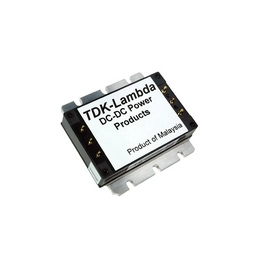Filters
Definition:
A filter is a device or process that separates or removes unwanted substances or elements from a mixture, stream, or signal. In various contexts, filters can be physical, electronic, or algorithmic, designed to achieve specific separation or purification goals.
Function:
1. Physical Filters: These are tangible objects like mesh screens, air filters, or water filters that physically block or trap particles larger than a certain size, allowing only smaller particles or the filtered substance to pass through.
2. Electronic Filters: Used in signal processing to remove noise or unwanted frequencies from an electrical signal, improving the signal's quality for further processing or transmission.
3. Algorithmic Filters: Employed in data processing and information systems to sort, categorize, or rank content based on predefined criteria, such as spam filters in email systems or content recommendation algorithms in social media.
Applications:
1. Air and Water Purification: Filters are crucial in HVAC systems and water treatment plants to ensure clean air and water supply.
2. Photography and Cinematography: Filters are used to adjust light transmission, enhancing image quality or creating specific visual effects.
3. Chemical Processing: Industrial filters separate solid particles from liquids or gases in processes like oil refining or pharmaceutical manufacturing.
4. Data and Content Management: Online platforms use filters to manage user-generated content, prevent spam, and tailor content to user preferences.
Selection Criteria:
1. Efficiency: The ability of a filter to effectively remove or block unwanted elements.
2. Capacity: The volume of material a filter can process before it needs maintenance or replacement.
3. Selectivity: The filter's ability to differentiate between desired and undesired elements.
4. Durability: The longevity and resistance to wear and tear of the filter material.
5. Cost: The balance between the filter's performance and its cost, including initial purchase and ongoing maintenance.
6. Compatibility: The filter's fit with existing systems or processes without requiring significant modifications.
7. Environmental Impact: The ecological footprint of the filter's production, use, and disposal.
When choosing a filter, it's essential to consider these criteria in relation to the specific application and requirements to ensure the best performance and value.
Please refer to the product rule book for details.
A filter is a device or process that separates or removes unwanted substances or elements from a mixture, stream, or signal. In various contexts, filters can be physical, electronic, or algorithmic, designed to achieve specific separation or purification goals.
Function:
1. Physical Filters: These are tangible objects like mesh screens, air filters, or water filters that physically block or trap particles larger than a certain size, allowing only smaller particles or the filtered substance to pass through.
2. Electronic Filters: Used in signal processing to remove noise or unwanted frequencies from an electrical signal, improving the signal's quality for further processing or transmission.
3. Algorithmic Filters: Employed in data processing and information systems to sort, categorize, or rank content based on predefined criteria, such as spam filters in email systems or content recommendation algorithms in social media.
Applications:
1. Air and Water Purification: Filters are crucial in HVAC systems and water treatment plants to ensure clean air and water supply.
2. Photography and Cinematography: Filters are used to adjust light transmission, enhancing image quality or creating specific visual effects.
3. Chemical Processing: Industrial filters separate solid particles from liquids or gases in processes like oil refining or pharmaceutical manufacturing.
4. Data and Content Management: Online platforms use filters to manage user-generated content, prevent spam, and tailor content to user preferences.
Selection Criteria:
1. Efficiency: The ability of a filter to effectively remove or block unwanted elements.
2. Capacity: The volume of material a filter can process before it needs maintenance or replacement.
3. Selectivity: The filter's ability to differentiate between desired and undesired elements.
4. Durability: The longevity and resistance to wear and tear of the filter material.
5. Cost: The balance between the filter's performance and its cost, including initial purchase and ongoing maintenance.
6. Compatibility: The filter's fit with existing systems or processes without requiring significant modifications.
7. Environmental Impact: The ecological footprint of the filter's production, use, and disposal.
When choosing a filter, it's essential to consider these criteria in relation to the specific application and requirements to ensure the best performance and value.
Please refer to the product rule book for details.
Categories
Datasheets
744232090 Datasheet
504M02QA100 Datasheet
FQA020ADC-007-S Datasheet
ACT1210G-800-2P-TL10 Datasheet
FQA020ADC-007-S Datasheet
744221 Datasheet
EMIF06-MSD02N16 Datasheet
PMR209MC6220M100R30 Datasheet
YFF31HC2A105M Datasheet
DLW21SN900SQ2L Datasheet
PLT5BPH3013R7SNL Datasheet
SDCW4532S-2-142TF Datasheet
ECLAMP2422N.TCT Datasheet
PCMF2HDMI2SZ Datasheet
NUC2401MNTAG Datasheet
Article

The Differences Between SAW Filters and BAW Filters: A Detailed Comparison of Unikeyic!
When procuring components such as filters, selection has always been a focal point of attention, especially for inexperienced users who should refer more to industry websites like Unikeyic. When purchasing filters, confusion often arises between SAW filters and BAW filters. Therefore, the following will introduce and compare these two common types of filters. Material and Oscillation Principles When selecting filters, resource...
Learn More >

Polar Capacitors: Types,Polarity Guide,Testing & Applications
Table of Contents + 1.What Are Polar Capacitors? 1.1.How Polar Capacitors Work 1.2.Structure & Dielectric 1.3.Common types 1.3.1.Aluminium Electrolytic Capacitor 1.3.2.Tantalum Electrolytic Capacitors 1.3.3.Supercapacitor2.Polar vs Non-Polar Capacitors 2.1.Key Differences 2.2.When to use polar capacitors 2.3.Equivale...
Learn More >

10k Ohm Resistor Color Code Explained: 4-Band, 5-Band, SMD Markings & Uses
Table of Contents + 1. Why 10k is the most used Resistor2. What is a 10k Ohm Resistor? Definition and Parameter Comparison3. What is the color code for a 10k resistor? 3.1. Common four-band and five-band specifications correspond to the following parameters 3.2. Quick Color Band Reference Chart (Including 10Ω vs. 10kΩ Comparison)4. How to Read Resistor Color Bands? A Technique Even Beginners...
Learn More >





_1755245571237.jpg)
_1755245565996.jpg)


















